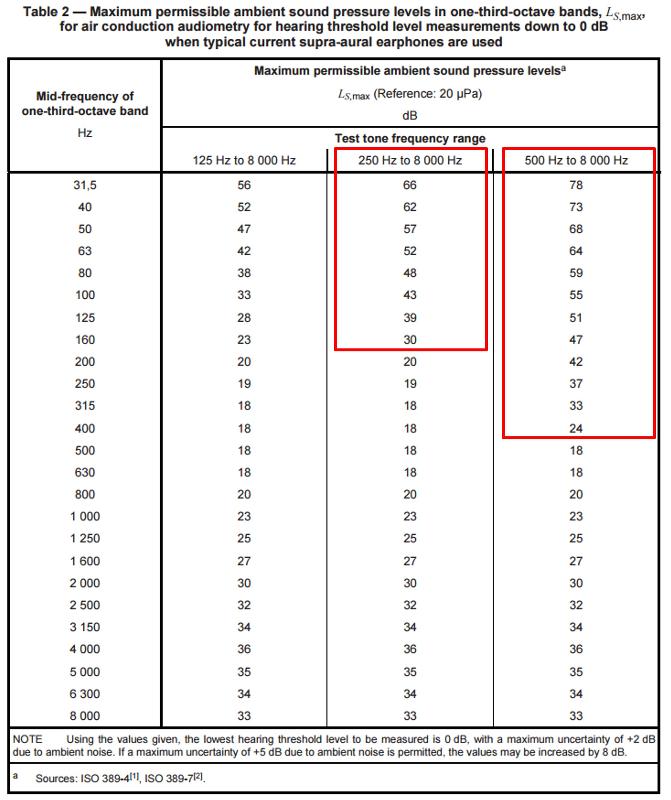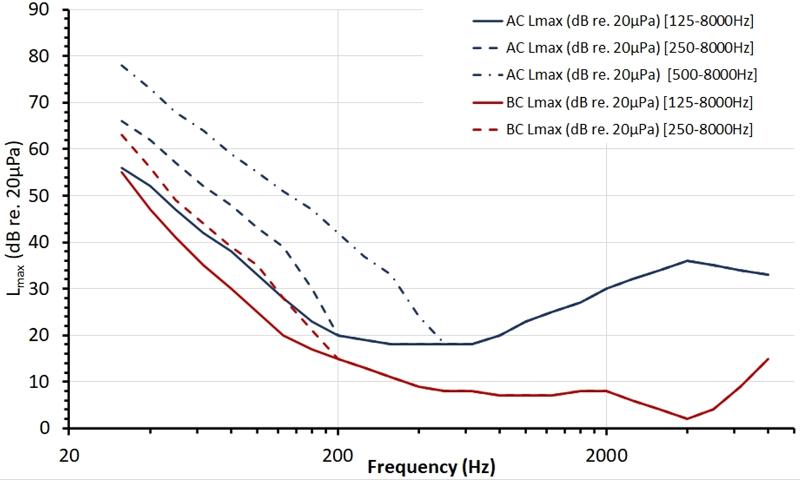Maximum Background Noise Levels in Audiometry
Whilst not strictly calibration, one of the key factors in carrying out pure-tone audiometry is the level of background noise in the audiometry room/booth. If this background noise level is too high then the tresholds will be artificially high. Because of this maximum levels of background noise for PTA are specified in standards. To assess this the background noise should be measured using a type 1 SLM with a filter so that you can measure 1/3rd octave bands of noise.These should be measured with the SLM set to Lmax (i.e. measuring peak values, not RMS). The table below gives the maximum allowable sound level in each 1/3rd octave band.
Figure 19 - Maximum background noise levels for PTA

Figure 19 - Maximum 1/3rd octave sound levels for air conduction audiometry using supra-aural headphones (from BS EN ISO 8253-1)> the three columns show values that differ in th elow frequencies depending on the range of low frequencies to be used. For example the right-hand column gives values when PTA is only carried out above 500Hz, the lower frequency values can be relaxed in this case (those within the red boxes).
Figure 20 - Maximum background noise levels for AC and BC PTA

Figure 20 - maximum background noise levels for PTA. Note that the maximum levels for BC are significantly lower than those for AC because the ear is not occluded by the headphones. Given that BC threshold are also also more likely to be lower than AC (in conductive losses) it is these values that determine the specification acoustic test booths. For BC, assuming that both ears are un-occluded, then the shape of the curve will be quite similar to that of the minimum audible field for a single ear.
For insert earphones there is even more attenuation so the maximum background noise levels can be relaxed slightly. But relaxing it to that for AC means that we can't do BC, so it is the BC level that defines what is clinically useable.
Reference
BS EN ISO 8253-1:2010 Acoustics. Audiometric test methods. Pure-tone air and bone conduction audiometry